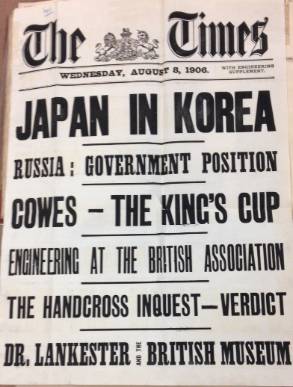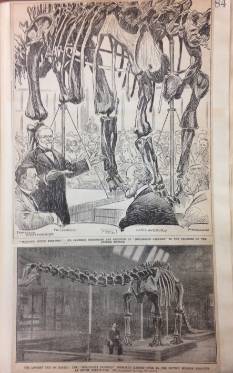This blog is written by Daisy Cunynghame from our Archives team to mark Explore Your Archive Week 2013 (www.exploreyourarchive.org)
Before the internet, television, and even the radio, the Natural History Museum was publicised to the world through the printed press. The Archives hold newspaper cuttings about the Museum from the 1830s right up to 2013, and they’re a great way of finding out more about the Museum – both how we really were, and how the media portrayed us.
What is now sometimes called citizen science was then, via the newspapers, a way of reaching out to people – from publishing a list of particular specimens we were short of, in the hope we’d get some opportune laymen to help, to asking those who stole bits of a giant squid which had been washed ashore if they wouldn’t mind terribly returning the pieces to us.
The newspapers would often track significant collecting expeditions all over the world – there would be regular articles each week about the progress they were making, the specimens they were finding, and any exciting near-death experiences.
Also quite a few clarifications abounded – there were rumours that we were willing to pay £1000 for a common flea, or as much again for the intact ash of a cigarette, and even more for a whole kingfisher nest. The press was the ideal way to dispel these myths (which sometimes the papers had created themselves in the first place) before we were inundated with smoked cigarettes and fleas.
Senior scientists, and the Director himself, definitely had no qualms about wading into the fray – having extended letters page debates with creationists, deconstructing the myths of sea serpents, and clarifying with one man who described both telepathy and radium as ‘unknowable magic’.
One of the early 20th century Museum Directors, E Ray Lankester, had a regular column in the Daily Telegraph titled ‘Science from an easy chair’, which discussed issues of the day and explained evolution, extinction and other scientific topics on behalf of the Museum. And, flipping the coin, when Lankester felt he had been forced into retirement he used the letters pages of the broadsheets and tabloids to fight his own corner.
The press also showed another side to the Museum – from the 19th century warden fired when he was caught drinking a professor’s gin, to the quarrymen who unearthed some fossils and were found by Museum scientists to be using them as cricket balls, the uncouth English ‘roughs’ damaging the railings, and the ‘flirting flappers’ who apparently took to congregating in the Museum’s Central Hall.





